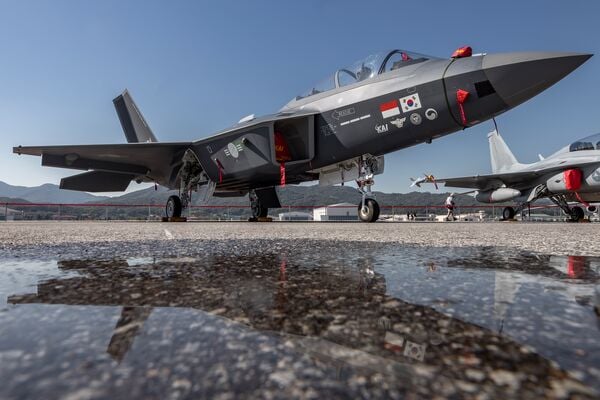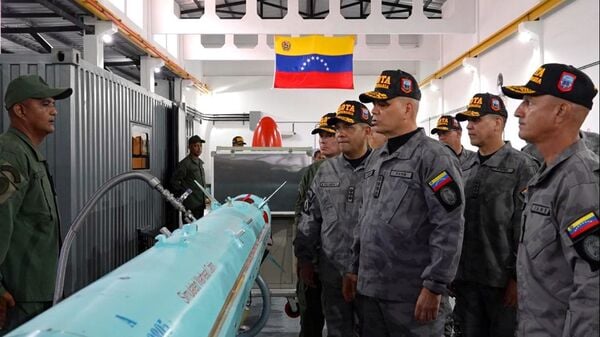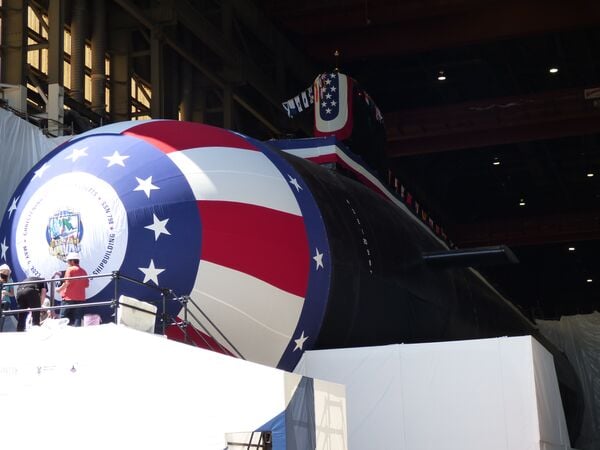- About
- Intara
- Capabilities
- Advisory
- Resources
- News
- Store
South Korean army deploying upgraded 81 mm mortar system
29 July 2021
by Gabriel Dominguez & Thomas Ford & Dae Young Kim
The Republic of Korea Army (RoKA) has begun deploying an upgraded version of its locally developed 81 mm mortar system, according to South Korea's Defense Acquisition Programme Administration (DAPA).
Delivery to RoKA units of the upgraded system, which is now in series production, began in June, noted DAPA in a 29 July statement.

A screengrab from footage provided by DAPA showing soldiers using South Korea's upgraded 81 mm mortar system. (DAPA)
Referred to as the ‘81 mm Mortar-II', the weapon, development of which began in December 2014 and was completed around August 2019, is not only 20% lighter than its predecessor, thus enabling greater mobility, but also requires fewer personnel (four instead of five) to operate.
The advanced mortar system uses laser and Global Positioning System (GPS) technologies to identify the location of the targets and calculate the mortar settings, thereby increasing the speed and accuracy with which rounds can be delivered on to target.
South Korea announces new aircraft engine factory
19 April 2024
by Akhil Kadidal


A new engine factory being developed by Hanwha Aerospace at Changwon will produce engines for the KAI KF-21 and the TA-50 multirole trainer aircraft. (Zhang Hui/VCG via Getty Images)
Hanwha Aerospace is building a new factory to produce engines for combat aircraft, including the Korea Aerospace Industries (KAI) KF-21 Boramae 4.5-generation aircraft. The new factory is also expected to support the development of South Korea's new domestic fighter engine programme.
Ground was broken for the 16,530m 2 engine production facility at Changwon on 15 April 2024, the South Korean Ministry of National Defense (MND) said on 17 April. The factory is being developed at a cost of USD30 million and is scheduled to be operational by 2025. The MND added that the factory's priority is the licence production of the 92.1 kN (20,700 lb st) General Electric F414-GE-400 engine for the KF-21.
A Hanwha Aerospace spokesperson told Janes on 19 April that “100%” of the licence manufacture of the F414 engine will be achieved at this factory. “The facility is expected to produce approximately 300 engines annually [after becoming operational], the spokesperson added.
Venezuela displays Iranian anti-ship missiles
19 April 2024
by Jeremy Binnie


Venezuelan Defence Minister Vladímir Padrino López inspects a CM-90 anti-ship missile. (Ministerio del Poder Popular para la Defensa (Venezuela))
The Venezuelan military confirmed on 16 April that it has the CM-90 export version of Iran's Nasir anti-ship missile (ASM).
Defence Minister Vladímir Padrino López inaugurated what a defence ministry statement described as a workshop for the CM-90 at Base Naval CA Agustín Armario in Puerto Cabello as part of the Bolivarian Navy of Venezuela's (ABV's) anniversary celebrations on that day. It released photographs and a video of Padrino inspecting several ASMs and associated containerised testing equipment inside a building.
The Nasir was developed from the Nasr missile, which is Iran's version of the Chinese C704, with the solid-propellant motor replaced by a turbojet engine and a launch booster. Iranian export documentation says this makes the CM-90 88 cm longer than the CM-35, the export version of the Nasr, and increases its range from 35 to 90 km.
US lawmakers grill US Navy officials on proposed shipbuilding budget
18 April 2024
by Michael Fabey


US lawmakers question the US Navy request to fund only one Virginia-class submarine (pictured) in fiscal year 2025. (Janes/Michael Fabey)
Members of the House Armed Services Seapower and Projection Forces Subcommittee raised concerns about the proposed US Navy (USN) plan to pare down key shipbuilding programmes on 17 April during the subcommittee hearing on the USN's Fiscal Year (FY) 2025 budget request.
While the USN – as was the case with the rest of the Pentagon – was charged with keeping a lid on costs, lawmakers said they felt the USN went too far with some major programmes.
Connecticut Congressman and ranking member of the Seapower and Projection Forces Subcommittee, Joe Courtney, set the tone with his opening statement.
“The Fiscal Responsibility Act (FRA), which [was] passed in May 2023 to avert a default on the full faith and credit of our nation's currency and bonds, mandated a 1% increase in the Department of Defense's budget request for fiscal year 2025,” Courtney said.
The Republic of Korea Army (RoKA) has begun deploying an upgraded version of its locally developed 8...
Latest Podcasts
Iran Israel analysis
In this podcast Janes analysts discuss the Iranian attacks on Israel on the 14 April. They highlight the military systems used by Iran and the performance and impact of these on Israel. They also discuss the implications of this attack goi...
Listen nowJanes Case Studies
Using Janes Intara to build a common intelligence picture: Russian build up on the Ukrainian border
View Case StudyNews Categories
 Weapons Details
Weapons Details